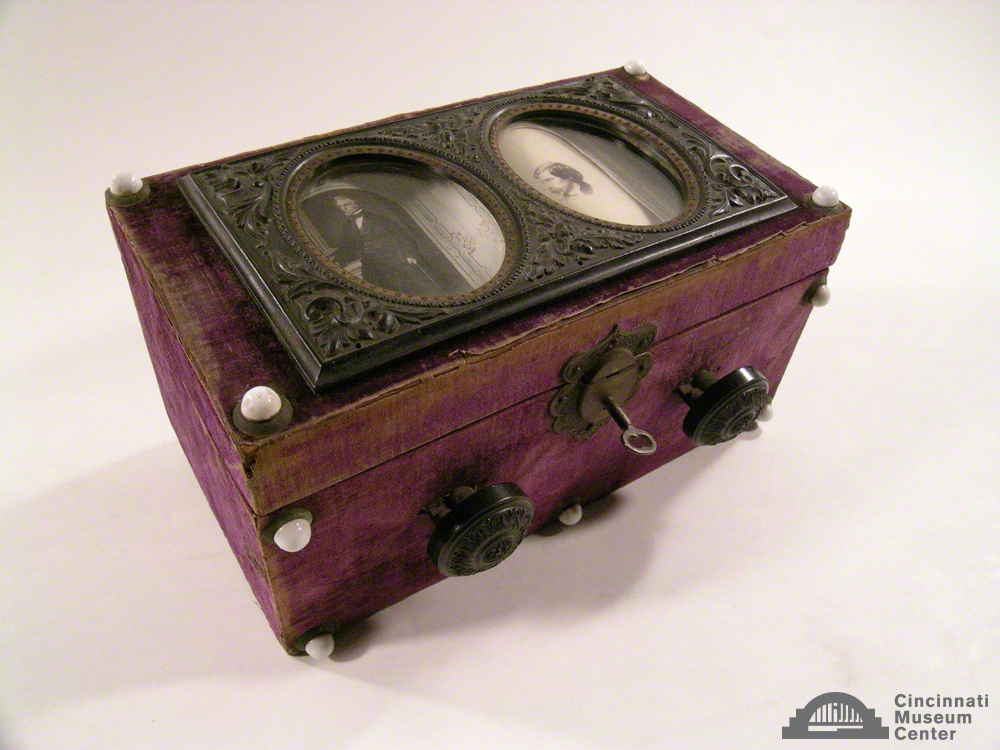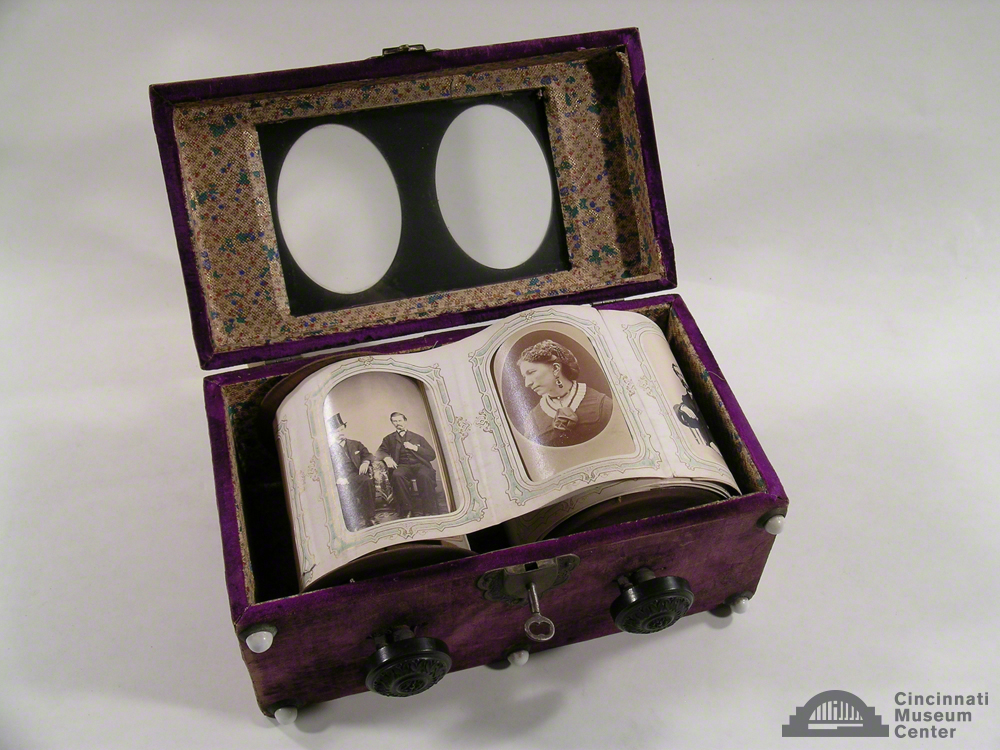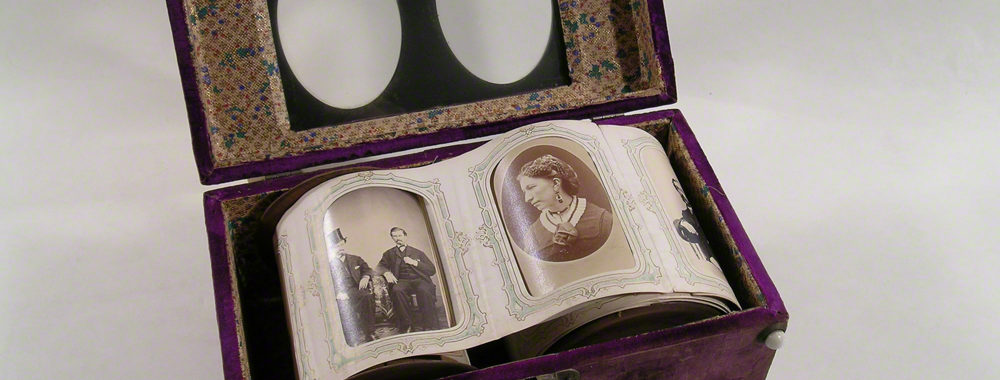
CMC Blog
A 19th-Century Cincinnati-Manufactured Picture Exhibitor
By: Scott Gampfer, Associate Vice President for Collections and Preservation

CMC's Robinson Viewer
Introduced to the United States from Europe in the late 1850s, the carte-de-visite or calling card photographic format soon became wildly popular. The small size and inexpensive nature of the card images brought them within reach of ordinary people. Since the images were printed from a glass plate negative, it was possible for customers to get as many copies of an image as desired. It also became popular to collect carte-de-visite images of celebrities and exotic or famous locales. So popular was demand for carte-de-visite images that the phenomenon was sometimes called “cartomania.”
The idea of creating photographic albums also became popular, and suppliers sold albums specifically designed to hold cartes-de-visite. One inventor, Charles Robinson of Massachusetts, received a patent in April 1865 for a clever device that allowed the viewing of dozens of carte-de-visite images, while at the same time preserving them from the wear and tear of repeated handling. Known simply as the “Robinson Viewer,” the device consisted of a box with internal rollers with an attached belt that held the images in pockets. Each pocket had a window cutout that allowed the image to be viewed. The lid of the box had two oval glass viewing windows. The operator simply turned a knob in one direction or the other to view two images at a time.
“A new, novel and ornamental article for the centre table.”
Cincinnati Museum Center collections contain a Robinson Viewer manufactured in Cincinnati sometime between 1867 and 1869 by D. Millard & Company, 160 West Fourth Street. Millard & Company promoted the device as “A new, novel and ornamental article for the centre table.” Even though being wound around a roller or spool imparted a slight curve to the card images, the inventor did not consider this to detract from “the perfect preservation of the photographs from soiling or loss.”
David Millard of Millard & Co. apparently only manufactured the devices in Cincinnati for three years, perhaps drawn to the prospect of a quick fortune during the height of the carte-de-visite craze. His usual method of employment was as a riverboat captain.
The example obtained for the collection is covered in purple velvet and features a black ornamental thermoplastic frame around the viewing windows, black thermoplastic knobs, and porcelain buttons at the corners. It came complete with 35 carte-de-visite images loaded in the belt. In an effort to prevent unauthorized meddling with the images, the manufacturer thoughtfully included a key lock at the front of the box. This piece is a fine example of a locally manufactured 19th century consumer item.

The open Robinson Viewer
Museum Admission
Includes Cincinnati History Museum, Museum of Natural History & Science and The Children's Museum
| Adult: | $22.50 |
| Senior: | $15.50 |
| Child: | $15.50 |
| Member Adult: |
FREE |
| Member Child: |
FREE |
Members receive discounts!
Become a Member today to save on programs, exhibits and films throughout CMC.
Museum Hours
Open Thursday – Monday
10 a.m. to 5 p.m.
Closed Tuesday and Wednesday
Closed Thanksgiving Day and Christmas Day
Member’s-only early entry: Saturdays at 9 a.m.
Customer Service Hours:
Monday – Sunday, 9 a.m. to 5 p.m.


